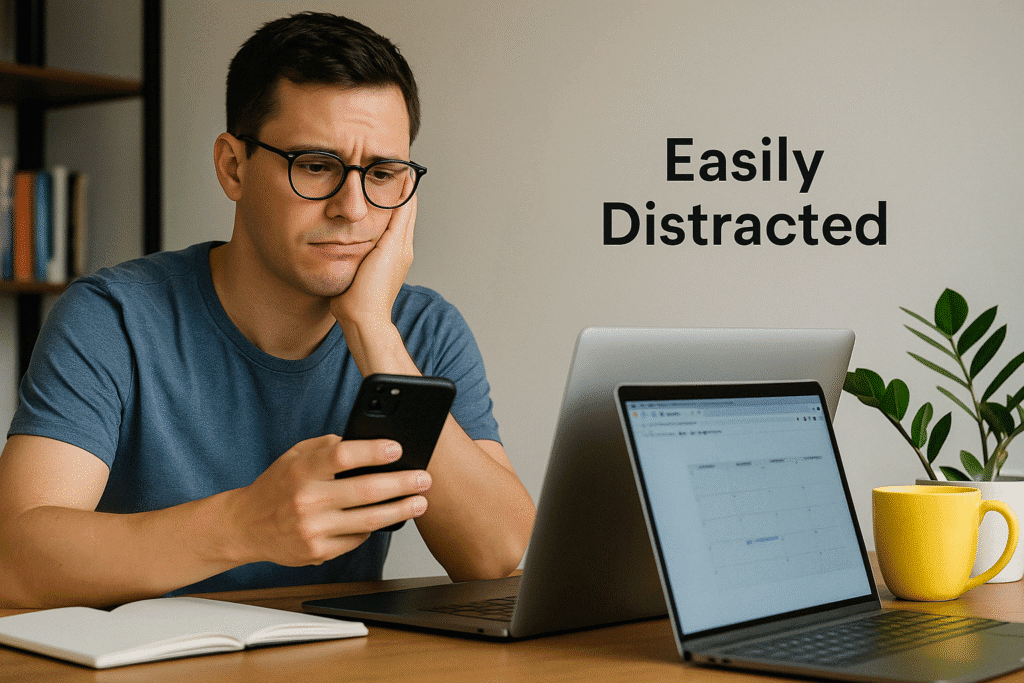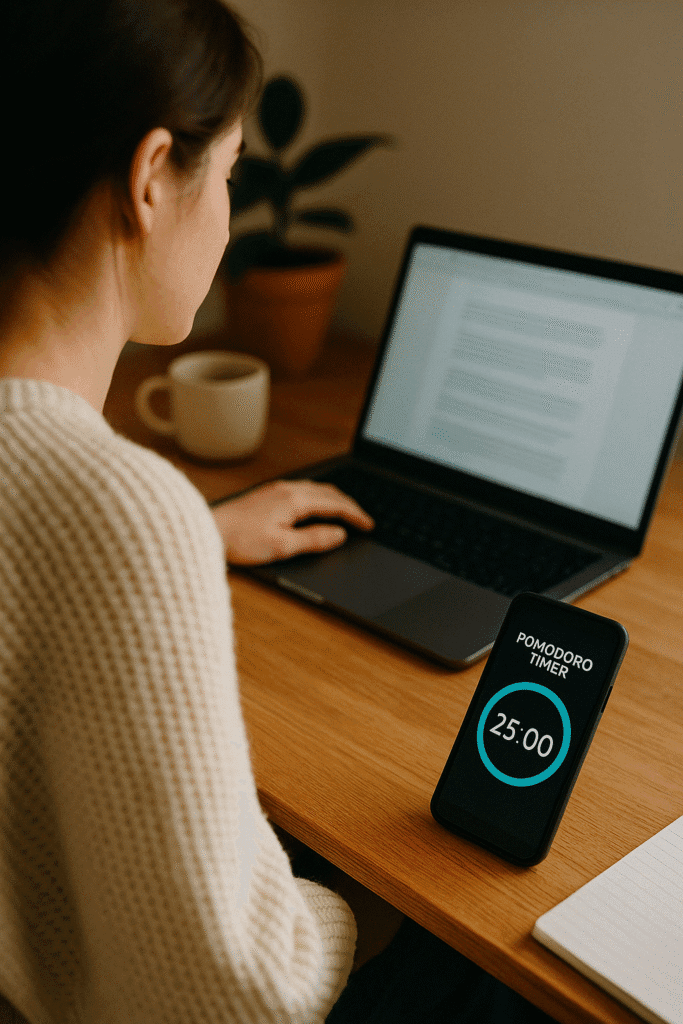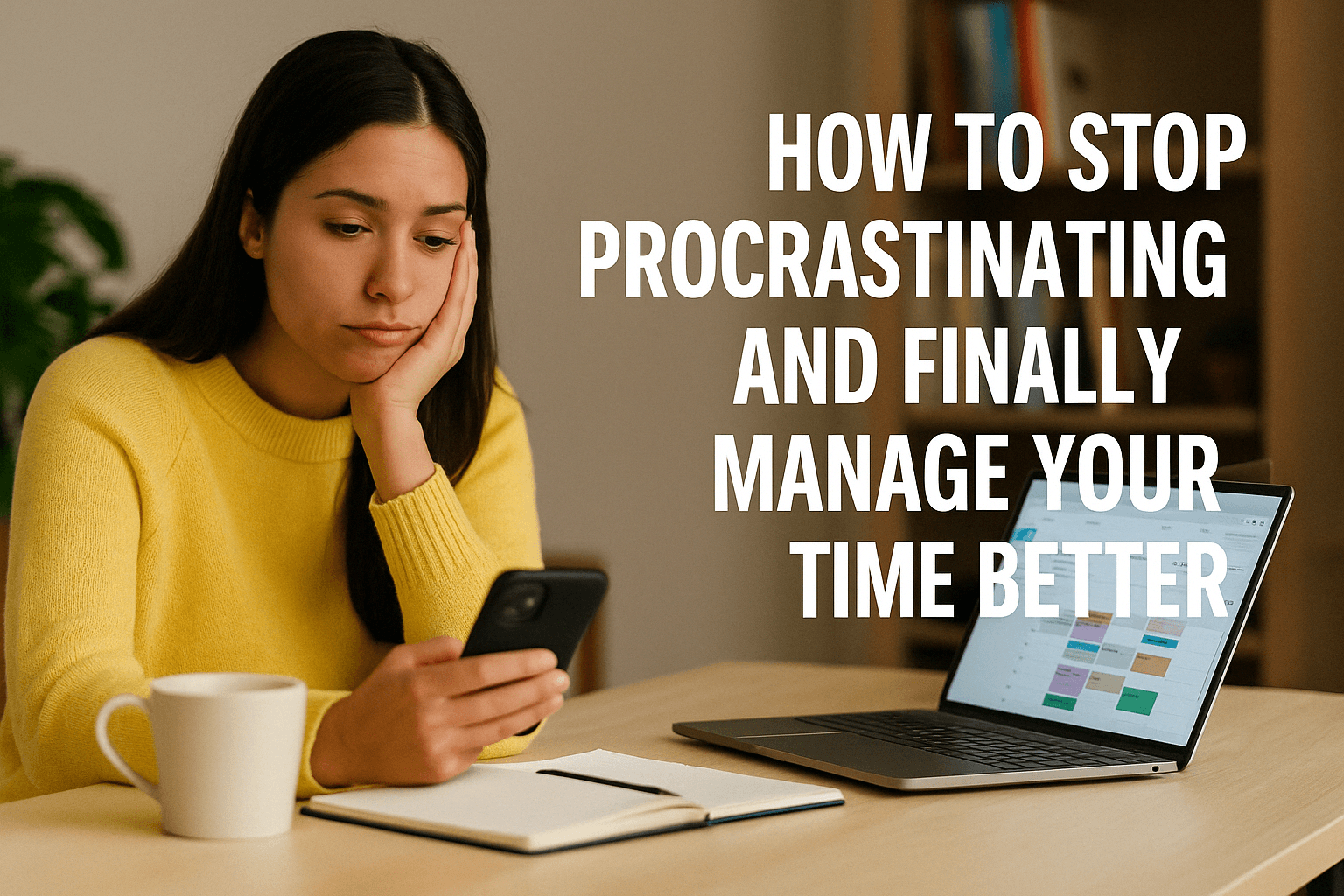You’re not lazy. You’re not broken. And you’re definitely not the only one who puts things off until the last possible minute.
Procrastination is something we all deal with. Sometimes it’s harmless—like ignoring laundry for another day. But when it starts affecting your work, your goals, or your peace of mind, it’s time to do something about it.
This article isn’t about guilt or productivity shaming. It’s about understanding why you procrastinate and showing you simple, doable steps to finally manage your time better—without needing to become a totally different person overnight.
Let’s start with the real reason behind why we avoid what we need to do.
Why We Procrastinate (And Why It’s Not About Laziness)
Let’s get this out of the way: procrastination isn’t about being lazy. It’s about avoiding something that feels hard, uncomfortable, or overwhelming. And more often than not, it’s your brain trying to protect you.
When a task feels too big, unclear, or emotionally loaded (like fear of failure or perfectionism), your brain goes into “avoid mode.” It wants a quick hit of dopamine—so you check your phone, scroll social media, clean your desk… anything but that one task.
This is called emotional avoidance, and it’s way more common than you think. You’re not dodging the task itself—you’re dodging the feeling you associate with it. Anxiety, self-doubt, boredom… they all push us toward distraction.
Understanding this changes everything. You’re not “bad at time management”—you’re just wired to seek relief from discomfort. The key is to recognize it for what it is, then take action anyway, in small steps.
Recognizing Your Procrastination Triggers
Before you can change a habit, you have to notice it in action. Procrastination isn’t random—it usually follows patterns. The trick is learning what triggers it for you.
Start by asking: When do I tend to put things off the most?
- Is it when a task feels too big or vague?
- When you’re already tired or distracted?
- When it’s something you should do but don’t actually want to?
You might find that your brain hits snooze the moment you open a blank document. Or that emails magically become urgent the second you sit down to focus on a real priority. These are signs. Pay attention to them.
One way to spot patterns is by jotting down your distractions. Keep a small log for a day or two. What are you doing when procrastination hits? What are you avoiding?
Once you start seeing the patterns, they lose power. You move from reacting to responding—with intention.

Break Tasks into Micro-Actions
Most of the time, we don’t procrastinate because we’re lazy—we procrastinate because the task in front of us feels too big. It’s vague, overwhelming, or just plain uncomfortable to start.
That’s where micro-actions come in.
Instead of thinking “I have to finish this project,” shift to “What’s the next tiny step I can take?” Maybe it’s just opening the file. Naming the folder. Writing one sentence. That tiny action lowers the mental barrier and gets the ball rolling.
You don’t need to tackle the whole thing—you just need to start. And once you start, momentum kicks in. Your brain shifts from avoidance to engagement, because now it has a clear path.
A great rule to use is the 2-minute rule: if it’ll take less than 2 minutes, do it now. If it’s bigger, break it down until it feels like something you can begin without resistance.
Procrastination thrives in vagueness. Clarity shrinks it. Micro-actions give your brain a way forward—one small win at a time.
Use Gentle Time Management Tricks
You don’t need to overhaul your life to get things done—you just need a few gentle nudges in the right direction. That’s where easy, low-pressure time management tricks can make all the difference.
Try the Pomodoro Technique: set a timer for 25 minutes and work on one task—just one. When the timer goes off, take a 5-minute break. It’s simple, flexible, and surprisingly effective, especially if you struggle to stay focused for long stretches.
Another trick: set a timer in reverse. Instead of working until a timer goes off, give yourself a deadline—like “I’ll write until 4:00 PM.” This helps you commit to a window of focused work without watching the clock.
Also: remove friction before you try to focus. Silence notifications, clear your desk, open only the tabs you need. The fewer temptations around, the easier it is to follow through.
And remember: reward yourself. Even something as small as a stretch, a snack, or checking something off a list can reinforce the habit of starting—and finishing.

Procrastination isn’t a personal flaw—it’s a signal. It’s your brain saying, “This feels hard, unclear, or uncomfortable.” And that’s okay. The trick is learning how to respond without judgment—and with simple action.
You don’t have to wait for motivation to magically appear. You just need to make the next step easier. Break it down. Remove distractions. Use tools that nudge you instead of pushing hard. And when you slip (because everyone does), just begin again—no drama, no guilt.
The best time to act is now. Not because now is perfect, but because it’s available.
Start small. Start messy. Just start.

Daniel Carter believes that small daily changes lead to extraordinary results. Through simple and effective strategies, he inspires readers to take control of their routines, overcome procrastination, and unlock their full potential.











